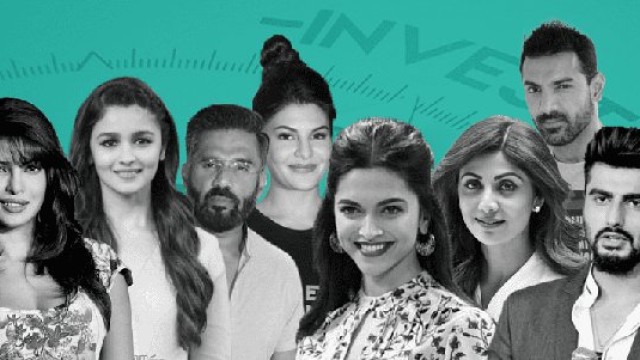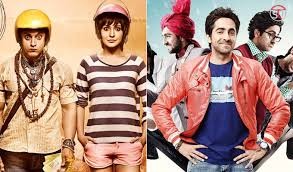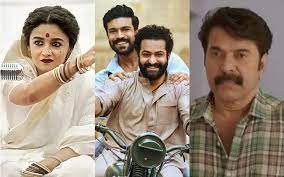Lights, Camera, Free Speech: An Exploration of Freedom of Expression in Indian Cinema

The concept of ‘Freedom of Speech and Expression’ is a fundamental right enshrined in the Indian Constitution, and is essential to the functioning of a democratic society. This right encompasses the freedom to express one’s thoughts, opinions, and ideas. However, when it comes to cinema in India, the issue of freedom of speech and expression has been a contentious one. Indian cinema has completed over a century of existence and played a crucial role in spreading the rich cultural, social, economic, and political heritage of the country. The film industry has the power to reach millions of people, making it a vital medium for communication and expression.
Free speech is the lifeblood of democracy and its protection is crucial to the development of individual personality. In a democratic society, where the people are the ultimate decision-makers, freedom of expression is of utmost importance. The Indian Constitution recognizes this fundamental right and guarantees the liberty of thought and expression to all citizens. In fact, securing this right is one of the primary objectives of the Constitution, as outlined in the preamble. To give effect to this objective, the Indian Constitution guarantees ‘freedom of speech and expression’ as a fundamental right under Article 19(1)(a). This provision provides that the freedom of speech and expression is protected while also recognizing the need for certain reasonable restrictions to maintain social order and harmony.

Films are an incredibly influential medium of communication that has undergone significant advancements in recent years. With the evolution of society and technology, films have adapted to keep pace with the changing times and have been able to reach the masses like never before. The film industry in India is the largest in the world, churning out more than a thousand movies annually and showcasing them in over 13,000 theaters throughout the country. Indian cinema has a rich history of challenging social norms and taboos, often through the depiction of controversial subjects. Indian cinema has been known for its representation of social issues, such as caste discrimination, women’s rights, and religious tensions.
Indian cinema has played a significant role in challenging societal norms and promoting progressive ideas, with films like ‘Mother India’, ‘Arth’, ‘Ennu Ninte Moideen’, ‘Bulbul Can Sing’, ‘Aparijito’, ‘Bhishorjan’ ‘Charulata’, ‘Bhoga Khirikee’, ‘Aideu’ and ‘Fire’ featuring strong female characters and exploring themes of female empowerment and independence. ‘The Great Indian Kitchen’, a Malayalam movie that highlights the struggles of an Indian woman breaking free from traditional gender roles. It exposes the patriarchal structure of Indian society and reminds us of the need to uphold the constitutional values of equality and justice.
Indian cinema has also tackled sensitive subjects like mental illness and disabilities, as seen in films like ‘Taare Zameen Par’, ‘Dear Zindagi’ and ‘Hichki’.
Movies like ‘Article 15’, ‘Jai Bhim’, ‘Asuran’, ‘Karnan’, ‘Bandit Queen’ explore the issue of casteism, shedding light on its impact and consequences. These films tackle the theme of caste discrimination and inequality, providing a powerful commentary on this social issue.
Indian cinema has a significant influence on public opinion in India and around the world. Indian movies have the power to shape public attitudes and perceptions on a wide range of social, cultural, and political issues. For instance, movies like ‘Alifa’, ‘Halodhia Choraye Baodhan Khai’, ‘Swades’, ‘Udta Punjab’, ‘Bhooter Bhabishyat’, ‘Hey Ram’, ‘Pather Panchali’ and ‘PK’ have addressed important issues like poverty, corruption, and religious tolerance. These films have brought attention to these issues and contributed to changing public perception and policy. ‘Jana Gana Mana’, a Malayalam movie, is the best example that deals with the issues of dirty politics, police brutality- fake encounters, student politics, casteism, media trials, and communalism, which are relevant in the current political environment of India. The movie sends a message of hope and optimism, emphasizing the need to fight for justice and uphold the values of democracy and freedom.
Moreover, films have played a crucial role in contributing to the socio-cultural development of countries. They have the power to bring people together and create awareness about important issues and it has become an integral part of our cultural and social fabric.
Although films are considered a medium of expression, they are subject to different rules and regulations. Unlike newspapers, films are subject to censorship. The Cinematograph Act, 1952 lays down guidelines for films to comply with the law. The Act provides for the establishment of the Central Board of Film Certification (CBFC), which is the regulatory body for films in India. The CBFC is responsible for issuing certificates to the makers of the film for public exhibition. The law states that the CBFC, after examining the film or having it examined, may either approve the film for unrestricted public exhibition, approve the film for public exhibition restricted to adults, direct the removal of certain parts or modifications to the film before approving it for unrestricted public exhibition or for public exhibition restricted to adults, or refuse to approve the film for public exhibition.

Indian judiciary has played a significant role in upholding the freedom of speech and expression in films. In K.A. Abbas v. Union of India (AIR 1971 SC 481), the Supreme Court declared that censorship of films was constitutionally valid as long as it was within the ambit of Article 19(2) of the Constitution. The court further held that any regulation which went beyond this legitimate purpose could be questioned on the grounds of abuse of power and recognized films as a legitimate medium for the exercise of free speech.
Recently in 2019, the Supreme Court penalized the West Bengal government with a fine of Rs 20 lakh for banning the public screening of the satirical film ‘Bhobishyoter Bhoot’ despite the film being certified by the CBFC for public viewing and had a U/A certification [4]. It was a pioneering verdict that espouses the contemporary outlook of liberalism. It exemplifies the interconnectedness of two distinct but intertwined domains of human society: Constitutional protections and Art as an expression of freedom.
Where the film industry is facing emerging challenges and opportunities in the digital age, the future of free speech in cinema is a topic of ongoing debate in India. While advances in technology and the rise of social media have created new opportunities for filmmakers to express themselves, they have also posed new challenges in terms of censorship and the spread of misinformation. In recent years, there have been instances where films have been targeted by online campaigns that have spread false information about the content of the film. This has led to protests and even violence in some cases.
The issue of freedom of speech and expression in Indian cinema is complex and multifaceted. While there are emerging challenges, there are also opportunities for filmmakers to express themselves more freely and reach a wider audience through OTT platforms. As the right to free speech is fundamental, it is essential to balance it with other rights, including those related to public morality and security. The film industry and the government must work together to ensure that a delicate balance is struck so that filmmakers can continue to challenge norms, promote diverse and inclusive narratives, and inspire public discourse. Ultimately, it is important for the government and film industry to collaborate and find innovative solutions to these challenges while ensuring that free speech is not compromised as it plays a crucial role in shaping public opinion and promoting social changes.
Keywords:
freedom, expression, film, art, India, movement, artists